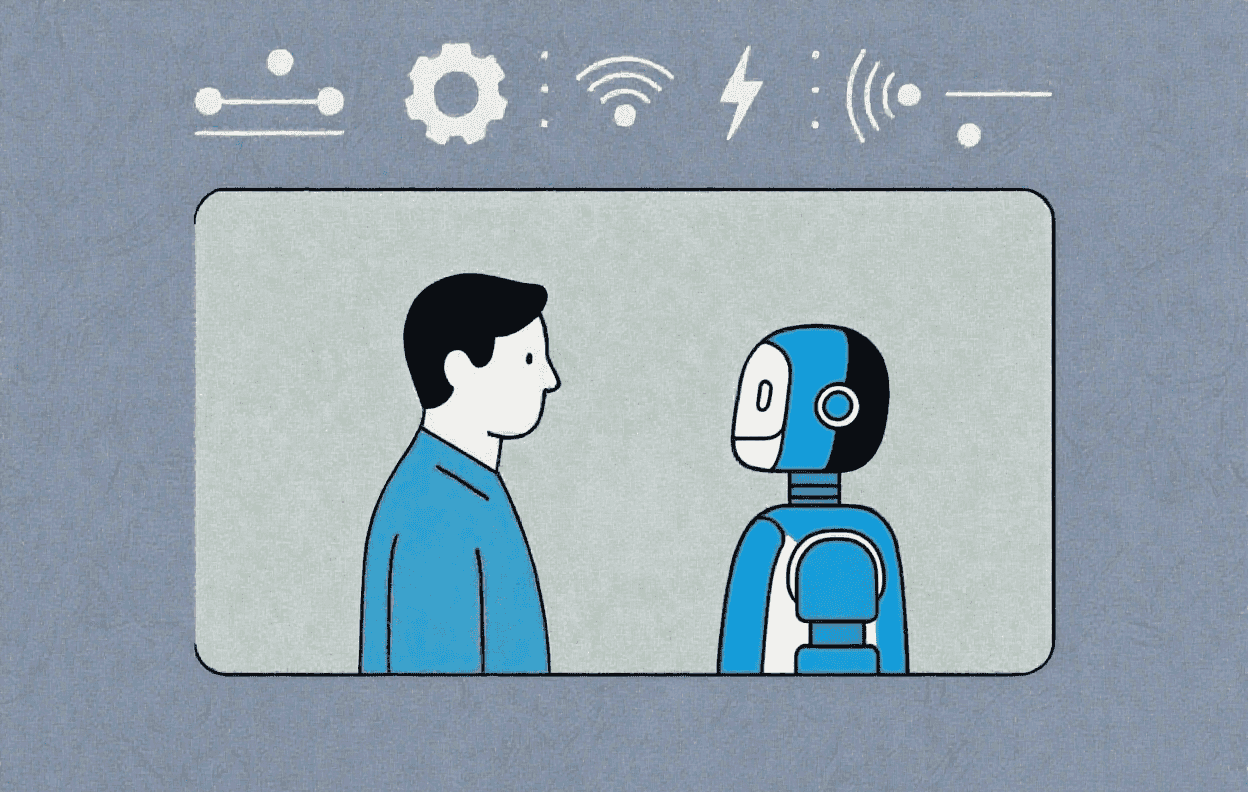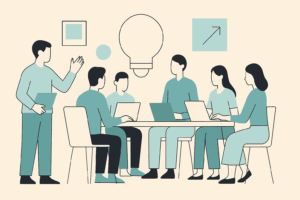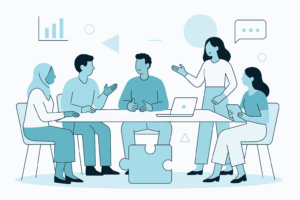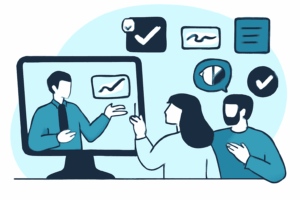Want to know why your meetings feel unproductive, even with an AI assistant? It’s because you’re getting transcripts, not AI advice. This revolutionary tech is the cure for post-meeting regret. If you’ve ever spent ages digging through old notes, trying to find one key decision, you’re in the right place.
The question is, why does this keep happening? The answer is simple: your current AI assistant probably has amnesia. It can record, but it can’t remember. Today, you’re going to learn about the power of AI advice. Let’s dive in.
The Problem: Your AI Assistant Has Amnesia
First up, let’s look at the core problem. Most AI meeting tools on the market today, even the popular ones, suffer from a critical flaw: they operate with short-term memory. They treat every single meeting as an isolated event.
Here’s how this “AI amnesia” hurts your workflow:
- Lost Context: The tool that transcribed your strategy session last week has no idea what you’re talking about in your follow-up meeting today. This means you have to constantly repeat yourself. It’s a GRIND.
- Forgotten Decisions: A decision made a month ago is buried in a sea of text. Because the AI doesn’t remember it, it can’t flag when a new discussion contradicts that old decision.
- Missed Opportunities: Your AI might transcribe a customer mentioning a competitor, but it won’t connect that to the five other times that same competitor was mentioned in the last month. The pattern, the real intelligent assistance, is lost.
- Passive Note-Taking: Your AI just sits there, passively recording. It doesn’t help you think, challenge your assumptions, or offer a suggestion when you’re stuck. It’s a recorder, not a teammate.
In short, these tools give you a library of conversations, but they don’t give you institutional knowledge. And that’s a huge difference.
The Solution: AI Advice – The AI That Remembers
So, what’s the solution? It’s a new category of intelligent assistance called AI advice.
In other words, AI advice is a proactive suggestion, clarification, or piece of information that an AI provides during a conversation, based on its understanding of both current and past context. It’s not just a summary you get after the call; it’s real-time intelligence that helps you in the moment.
Here’s the key difference:
- Passive AI records what you say.
- Proactive AI understands what you mean and helps you figure out what to say next.
This is a whole different ball game. Instead of just a transcriber, you get a thinking partner. One that remembers everything, connects the dots, and isn’t afraid to chime in.
How AI Advice Solves Your Biggest Meeting Problems
Sounds simple, right? Well, the impact is huge. Let’s look at how this kind of contextual AI directly solves the pain points caused by AI amnesia.
Preventing Bad Decisions with Real-Time Fact-Checking
How about an example? Imagine you’re in a meeting and a teammate says, “Let’s go with vendor X, their pricing is $50 per unit.” A passive AI records this. But an AI with AI advice capabilities might instantly pop up a note in a private feed: “According to our call with Vendor X on June 3rd, the price was quoted at $65 per unit after the initial discount.” Boom. A costly mistake is avoided, right there and then.
Uncovering Hidden Opportunities by Connecting Dots
Let’s say you’re on a sales call. The customer mentions they’re struggling with “inventory management.” A basic AI notes this down. But an AI that provides AI advice remembers that three of your other top clients also mentioned this exact pain point before they signed up for your premium package. It might suggest: “This is a key buying signal. Mention the ‘Advanced Inventory’ module from the Tier 2 plan.” That’s not just a note; that’s a revenue-generating piece of AI advice.
Eliminating Post-Meeting Chaos with Proactive To-Dos
We’ve all been in meetings where someone says, “I can take care of that,” but it never gets written down. An AI providing AI advice doesn’t just wait for you to say “action item.” It understands the intent. It will automatically create a to-do, assign it to the right person, and even suggest a due date, all before the meeting is over.
A Deeper Look: Proactor AI’s “AI Advice” Engine
So, how does this look in a real product? Let’s look at Proactor AI, a tool that has made AI advice a core part of its platform. And I should know, I’ve tested dozens of these tools.
Proactor is designed from the ground up to be a “second brain” that actively participates in your meetings. Here’s how it works:
- It Builds a Memory: First off, every conversation you have is not just transcribed, but indexed and added to a “Global Memory.” This becomes your team’s collective intelligence.
- It Detects Triggers: During a live meeting, its Insight Stream is constantly detecting triggers. These could be keywords, questions, specific topics, or even contradictions to things said in past meetings.
- It Delivers Proactive Advice: When a trigger is detected, Proactor delivers its proactive suggestions. This can take many forms:
- A fact-check: Correcting a misremembered statistic.
- A contextual reminder: “Here’s the link to the document you discussed last week.”
- A strategic suggestion: “You’ve mentioned ‘user churn’ three times. Would you like me to pull up the latest churn report?”
This is one of the most powerful implementations of AI advice on the market today. It transforms the AI from a passive scribe into an active, intelligent assistant. Pretty cool, right?
Are You Ready for a Proactive Partner?
The bottom line is this: the standard for a top-tier AI meeting assistant has changed. Simply turning speech into text is no longer enough. The future of work isn’t about having more data; it’s about having better insights, delivered at the right moment.
Continuing to use a passive, amnesiac AI is like choosing to use a flip phone in the age of the smartphone. It still makes calls, but you’re missing out on a world of intelligence and capability. The shift to proactive AI advice is not just a new feature; it’s a fundamental change in how we will collaborate with technology.
Over to You
Now I’d like to hear from you: what’s the biggest problem in your meetings that you wish a tool with AI advice could solve? Let me know in the comments below.






